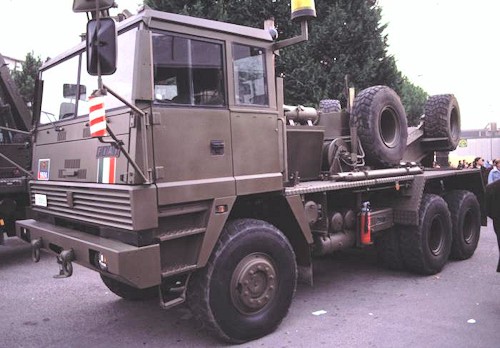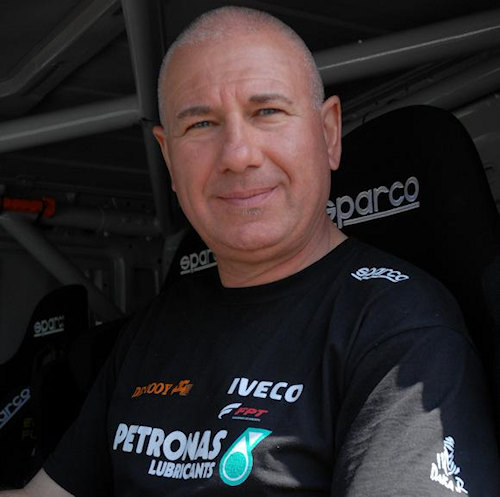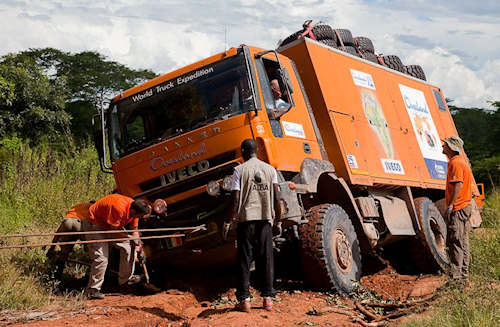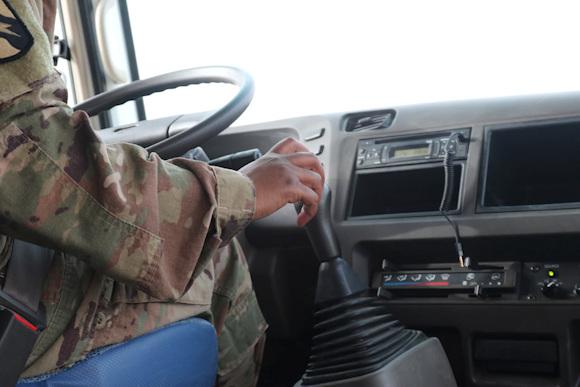Even in the automotive sector, the rules of the market are favoring an all too rapid progression in the name of connectivity and driving assistance and safety systems. An undoubtedly useful process for safety, but one wonders how much these systems affect the traditional ability of Italian drivers.
If we go back to the 70s we can remember how much children liked to vocally reproduce the noise of the engine and gear changes. A sort of early driving training that influenced the adult purchase of mopeds or cars with manual transmission.
Then, with the growth of traffic, came the great metamorphosis which saw the diffusion of single-speed mopeds and cars with automatic gearboxes.
Automatism is absolutely a convenience, but it also represents the first element that paved the way for changing the relationship between driver and vehicle.
Today the ideal buyer is the one who doesn't ask too many questions about why a specific component exists or works, perhaps with a compelling name (and the industry knows it well), just move and be connected. The car that until the last century reflected the identity of the owner and the industry of a country is today metaphorically evolving into a comfortable sofa on wheels. Montezemolo's recent statements to Corriere della Sera suggest: “Stellantis is a French group, only Ferrari remains in Italy” ; "The decline of Made in Italy, understood as tradition, innovation capacity and technological know-how, is now an irreversible phenomenon".
The military evolution
If we examine the crank windows, we realize that in the military the air conditioning button arrived earlier than the electric one for the windows.

The army has always had to mediate between practicality and reliable and long-lasting technical and mechanical solutions precisely on costs, however with globalization it has not been able to escape the evolution of the automotive industry even if the entry of new products has been gradual compared to the civilian market.
Having postponed the entry onto vehicles of many inventions has given the armed forces the advantage of using systems that have been tested for some time on the civilian market, as in the case of automatic and automated gearboxes to replace the traditional mechanical ones.
Today the army has a mixed fleet, where the heavy trucks are equipped depending on the use with manual transmission, but also with automatic or automated systems.
Training is important
You will remember the authoritative articles in the monthly "Quattroruote" illustrated with the exploded views of the workshop which showed the technical characteristics of the vehicle, making the average user more aware of the use of his vehicle. In reality, despite this interesting help, not everyone used the manual gearbox correctly. Today however, thanks to the control units of automated gearboxes, driving a car is rendered self-adaptive. It therefore increases active safety and automatically performs what a good driver should do using the gearbox and clutch.
In the military field as well as in the civilian professional sector, training and driving steps are used precisely to reproduce ordinary maneuvering scenarios, driving on the road, driving with loads, rather than in theoff road.
Thanks to the era of excessive consumerism, when it comes to automatic gearboxes it is not at all difficult to come across people who do not know of the existence of automatic clutches or even mistake it for a plumber, perhaps due to the now conventional similarity of the control in the cabin . In reality there are also responsibilities on the choice of concepts to be imparted to candidates in driving schools, at least since it was decided not to focus on the engine, mechanics and transmission. Luckily the new generation of automatics with multi-disc clutch packs on cars has increased reliability by also proposing the typical operating characteristics of the previous hydraulic gearboxes (for example the idling obtained by loosening the brake electropedal), however repairs are not i'm a joke.

Automatic, automated and manual
Today we talk about Automatic for lexical brevity, but the families are actually different even if similar. On heavy vehicles there are three variants: the automatic (epicycloidal hydraulics with torque converter) the automated (mechanical electro-actuated with one or more clutch plates) ei manuals.
Traditional automatic systems with converter have an irreplaceable role in traffic and in particular for heavy handling, it is no coincidence that ATC 81 6623.G already did hydrotrans and the use of the hydraulic system is present on the M113 rather than the Leopard 1A.
- automated they constitute the latest technological frontier representing a huge compromise in the professional world of transport. In addition to less fatigue for the driver, they offer less wear on the clutch because it is used correctly by the software program, lower fuel consumption, a wide range of gears and a lighter system than theplumber.
Although the automated gearbox has seen the light in the sports arena due to the appreciated speed of gear changes, for example on the Ferrari 640 F1 of '89, in heavy vehicles the response times are clearly greater. The systems automated they can "tear" a little in city use and it is important to use them by accelerating as if we had a manual gearbox, ie gradually (which is not very instinctive in certain situations), but it is important to know their limits and vulnerabilities.
For maximum efficiency of hydraulic you have to consider having the oil (red) at the right temperature, especially in winter, and generally the presence of a lower number of gears than an automatic, a condition which can create some embarrassment on long mountain climbs especially if you have of limited powers.

Lock-up clutch
For both military and commercial use, converter automatic transmissions were already equipped with a converter lock-up clutch in the 80s - lock-up clutch -. That is the fixed joining of the rotating pump and turbine. This system has already seen the light with the 4-speed systems and, in itself, it is a first additional ratio to the standard 4 or 5.
Il lock up it still intervenes today just above 1000g/m (consider that the idle speed of a heavy vehicle is around 580g/m), avoiding power losses, limiting consumption, but above all to ensure engine braking. It deactivates just above the engine idling speed, remaining independent even during the use of the auxiliary slowdown systems, retarder/intarder.
When the converter is "locked", the "baskets" containing the lamellar clutches that control the epicycloidal groups for gear changes work autonomously (now computerized), therefore without the need to "release" the converter from the clutch for each gear change as on an automated or manual. Despite its reliability, it is important to replace the gearbox filter and the oil, which loses its characteristics with use, becoming dirty with the dust released by worn clutches.

In the automotive sector, the system is similar but with different programming and, usually, with engagement lock up close to the live socket. This is possible thanks to the greater number of gears, even 8, a condition which reduces the speed jump at each ratio change, always keeping the engine in an appreciable torque range.
The end of the manual gearbox?
We could argue that its only limitation is "the fatigue of having to change gear" being the simplest and therefore most reliable system with little maintenance (apart from the clutch), a system that is perhaps satisfied with a few changes over the course of its life of oil. Connoisseurs are actually fascinated by this "effort". The mechanic is the most suitable in critical situations and, as we will see, in races.
Matthew Crawford, an American motorcycle repairer business consultant and author of bestseller, while acknowledging the convenience of automatic transmissions, argues in his 2020 book, “Why we drive” two maxims: “shifting gears embodies road appeal and embodies human control over a car and the engineered world”; “just as the rider must perceive the horse's gait, so the driver must understand how the engine works. But modern automotive technology tends to inhibit this feeling.".
But there's more, always in the USA the automotive magazine Car and Driver has launched the “save the manuals” campaign with the hashtag #SaveTheManual. It may seem strange that this initiative starts right from the USA, the land of the automatic, but overseas those who are sportsmen are really sportsmen and, if they can afford it, own European sports cars that are often manual.
Perhaps with an education less directed towards futile technologies, which gives importance only to those indispensable for safety and keeps both hands on the wheel, it will be possible to go back to appreciating an excellent and long-lived technology.
Too much electronics?
Electric mobility is trying to establish itself on the market as an alternative to fossil fuels, but the road is still long and modern internal combustion engines actually still have a lot to offer. It is not an imminent oil depletion that is causing the traditional automotive sector to change course, rather we should observe the global geo-economic balances in addition to the cyclical global warming to which pollution also contributes. Several luminaries of science are very sure of this, adding for Corriere Carlo Beatrice, research manager at the CNR Engine Institute: “Modern Euro 6d diesels are the best technology for compliance with the limits in any condition of use of the vehicle”.
However, electronics, as in transmissions, play an important role, that of offering more safety, comfort and a new experience appeal with vehicle functions. You will remember the reverse gears to the millimeter which forced you to open the door to check the distances perhaps betrayed by a wet mirror.
The hope is that human capabilities can be crossed in synergy with electrical systems with the aim of not completely replacing man. Currently, Henry Ford's concept is certainly certain: “What isn't there doesn't break”.
 A few questions to the Pilot
A few questions to the Pilot
For “Difesa Online” I contacted one of the most authoritative experts in endurance competitions, raid extremes, tests and technologies often associated with heavyweights. It is Giuseppe (Beppe) Francesco Simonato, the leading pilot of the expedition Overland driving the orange nose 330.30, in various rallies and in the Dakar.
Taking Crawford's considerations for granted, I wanted to ask Beppe what role the manual gearbox plays for the driver of the vehicle and what its future is. I want to understand if he shares the motorcycle concept of the legendary Nico Cereghini who claims (and he's absolutely right) that the real rider wants the gearbox: “for us it is an integral part of the beauty of driving”.
In your toughest tests and competitions you will surely have had to deal with automated transmissions (the term robotized has been set aside), how do they seem to you?
The feeling of total control of the vehicle belongs to the traditional system and controlled completely by man. Needless to hide that this system tends to be preferred, but technology has evolved automated gearboxes that are very effective even in off-road use which have the great advantage of saving the clutch and allowing control and are in any case effective in maneuvers and even complex passages.
How important is the symbiosis between vehicle and driver, i.e. his imaginary psychophysical extension with the car?
I would say fundamental and all motorsport activities certainly demonstrate this; without this combination there can be no maximum performance and consequently no optimal result.
In the light of military armored trucks (the brand is not important) which have a significant mass, how important is weight off-road?
More than the weight, which must always be considered in any case, its distribution must be taken into account to understand how the forces that can help traction can be distributed and consequently obtain the best possible grip.
In the "heavy" sector, the ZF TraXon, Scania Opticruise and Volvo I-Shift systems are doing great; in a regularity and endurance race using an automated equipped truck there is an inevitable reduction in driver stress, what does that mean in practical terms?
Surely the physical effort is reduced but not the psychological one because the perfect human "machine" as a whole instinctively requires continuous control of the more autonomous performance of an automated system.
 Stress aside, in Formula One where the sequential has been used for years now, the drivers use the paddles for shifting as well as in rallies. In heavy vehicles and in traffic, the automatic function is more practical (obviously out of necessity). At this point one would think that the automated has equaled the manual, but is it only a question related to the stopwatch?
Stress aside, in Formula One where the sequential has been used for years now, the drivers use the paddles for shifting as well as in rallies. In heavy vehicles and in traffic, the automatic function is more practical (obviously out of necessity). At this point one would think that the automated has equaled the manual, but is it only a question related to the stopwatch?
Not only that but it is a whole that blends with the habituation of the pilot who over time assumes more and more security from the performance of the automated system.
Can you give me an example of the displacement, weight and power ratio of some trucks developed for civilian competitions?
In rally raid competitions, a top-class truck with a 13-litre engine capacity weighs a minimum of 8500 kg.
An automatic system compared to a manual one requires an approach with different rules; for example, I am thinking of drifting with rear-wheel drive by exploiting the torque lock when the clutch is abruptly lifted. So is only the driving beauty as Nico calls it lost or are there also sporting limitations that are unmatched by other systems?
The detailed answer is complex. I can only say from personal experience that drifts due to oversteer and other limit controls are often possible even in the presence of power assistance considering the great power but above all the engine torque in a rally truck.
Can I argue that the epic bogs of 330.30 in Overland were solved further by the excellent qualities/characteristics of the means, following precise physical logics on the use of cables, quickdraws and anchor points?
Absolutely yes, especially in expedition 12, which was the most difficult and demanding in 2010 in Africa, only analyzing specific balances of forces produced the results of being able to get out of the quagmire in conditions considered by most to be impossible.
The evolution of history, in this case the technological one of the automotive industry, quickly leads us to new goals (automated, hybrid or electric), therefore living off comparisons with the manual is probably anachronistic and harmful even for "pure". Is it better to accept to get back into the sporting game too with new rules, but also to set different limits and objectives in the modern off road?
I believe in the spirit of adaptation and in the evolution required by new technologies. However, the "taste" of the traditional remains.
 In asking you this question I am inevitably thinking of the "4x4 recovery technique with the engine off" when you stop on the steep slopes ... and you have to go back down ... . In the'off road a bit dated with the same technical characteristics, the off-road vehicles with torque converter had a hard time with the manual counterparts which were much more comfortable and with lighter weights. Is this still the case or does it really only matter the skills of the pilot?
In asking you this question I am inevitably thinking of the "4x4 recovery technique with the engine off" when you stop on the steep slopes ... and you have to go back down ... . In the'off road a bit dated with the same technical characteristics, the off-road vehicles with torque converter had a hard time with the manual counterparts which were much more comfortable and with lighter weights. Is this still the case or does it really only matter the skills of the pilot?
There are modern transmission release systems.
The Army is investing heavily in personnel safety training and in this area both the light and the heavy are obviously not called to compete or compare, but above all the former, the light, can (perhaps rarely) be employed in quick patrols on treacherous terrain and in difficult conditions. In these conditions which transmission would you choose?
Automated transmissions have been used for years on vehicles, especially Light ones. They are not bad considering the frequent changes of driving and the not always excellent skills of the drivers involved.
So even in extreme military use, off-road courses for pilots have a reason to exist, if only to know the limits of the various 4x4s supplied to the departments?
Well I would say without a doubt very useful almost fundamental.
Thanking you, I ask you the last question with a premise: the new Iveco Lince VTLM 2 is something exceptional and Online Defense had the opportunity to be invited to the 82nd Infantry for a thrilling test. So I relaunch the crazy idea of going back to the Middle East, but with this car and the Dakar, do you like the idea?
At the moment I can't give you a complete answer. Perhaps with a full electric engine ... something is brewing for a Dakar rally use!
Conclusions
Summing up and after these specific indications received by Beppe Simonato on which transmission he prefers on a Raid or rally truck, albeit futuristic, Beppe has very clear ideas: "beyond all the considerations made of technological progress and market trends, the use of a manual gearbox can give emotions that power assistance will never be able to match!"
Photo: US Army National Guard / web












